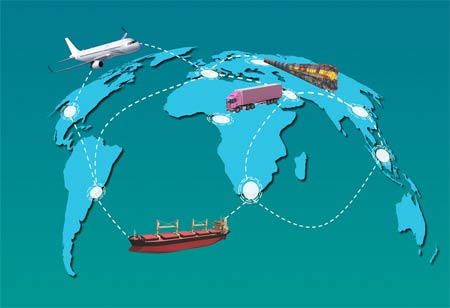THANK YOU FOR SUBSCRIBING
THANK YOU FOR SUBSCRIBING

By
Logistics Transportation Review | Friday, August 30, 2024
Stay ahead of the industry with exclusive feature stories on the top companies, expert insights and the latest news delivered straight to your inbox. Subscribe today.
Europe's intermodal transportation is transforming significantly due to climate change, urbanisation, and supply chain complexities, incorporating autonomous vehicles, IoT, AI, green initiatives, blockchain, drones, and 3D printing.
FREMONT CA: Intermodal transportation, which involves the seamless transfer of freight between various modes of transport, such as rail, road, and water, has become a crucial strategy for improving efficiency, sustainability, and cost-effectiveness in the European logistics sector. As Europe faces ongoing challenges, including climate change, urbanisation, and supply chain complexities, the future of intermodal services is set to undergo substantial transformation.
Automation and Digitalization
The integration of autonomous vehicles into intermodal operations is rapidly advancing. Self-driving trucks, for example, promise to streamline last-mile deliveries, cut labour costs, and enhance safety. Similarly, Internet of Things (IoT) technology enables real-time freight tracking and monitoring, optimising routes, minimising delays, and improving supply chain visibility. Artificial Intelligence (AI) further contributes by analysing extensive datasets to forecast demand, optimise resource allocation, and detect potential disruptions.
Electrification and Green Initiatives
The shift towards electric vehicles is gaining momentum, supported by significant investments in charging infrastructure across many European countries. This transition extends to electric trains and ships, which are becoming more common, thus reducing carbon emissions and improving air quality. Concurrently, intermodal terminals are increasingly adopting renewable energy sources such as solar and wind power to lower their environmental impact. Sustainable practices, including eco-friendly packaging and route optimisation, are also becoming integral to intermodal operations.
Policy and Regulatory Changes
Carbon pricing mechanisms, such as the European Union's Emissions Trading System (ETS), are encouraging a shift towards more sustainable transportation modes. Governments are also investing in enhancing rail and inland waterway infrastructure to support intermodal transport and decrease dependence on road transport. Furthermore, policymakers are promoting digital transformation to boost the efficiency and competitiveness of the intermodal sector.
Collaborative Partnerships and Ecosystems
Public-private partnerships are crucial for developing and implementing innovative intermodal solutions involving collaboration between governments, businesses, and logistics providers. Creating interconnected ecosystems—encompassing intermodal terminals, logistics hubs, and transportation networks—is essential for optimising goods flow.
Emerging Trends
Blockchain technology offers enhanced transparency, security, and traceability throughout the intermodal supply chain, mitigating the risk of fraud and counterfeiting. Additionally, drones and unmanned aerial vehicles (UAVs) are utilised for inspections, surveillance, and deliveries, particularly in remote or challenging areas. Advances in 3D printing technology also hold the potential for localised manufacturing, reducing the need for long-distance transportation.
As the European Union remains committed to advancing sustainability and efficiency within its transportation sector, intermodal services are set to become integral to realising these objectives. Through adopting automation, electrification, and strategic policy reforms, Europe is well-positioned to lead the global intermodal revolution.
I agree We use cookies on this website to enhance your user experience. By clicking any link on this page you are giving your consent for us to set cookies. More info





